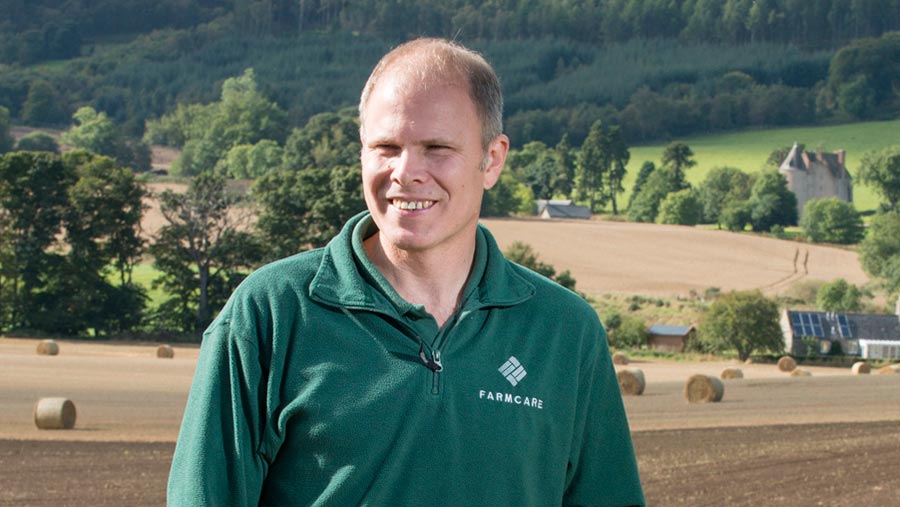Farmer Focus: Weather plays havoc with crop ripening and tillering
 © Angus Findlay
© Angus Findlay The whole country seems to be suffering from a lack of summer. There have been days that have felt like winter, only with more daylight.
We have had less rain than most – 64mm in July (below our average). Although the devil is in the detail with statistics, with only eight days in the month without rain, there were few opportunities for spraying or harvest.
It is playing havoc with crop ripening. Winter barley was brought on quickly by the hot, dry June and harvest started on 20 July, only a day later than last year.
The yield was good at about 8t/ha, with acceptable specific weight, but small grains.
See also: Harvest 2023: The 5 top-yielding winter OSR varieties map
This was followed by a 10-day break, before we got into OSR on 7 August. So far this has disappointed, with any drier areas having a low yield.
The weather from April onwards has not favoured OSR, with a prolonged flowering period, followed by drought, then a lack of sunshine limiting yield.
It looks like even the earliest spring barley won’t be ready until late August, which is fairly normal, but there is quite a variation in stage of ripening according to drilling date and soil moisture.
There is a lot of secondary tillering in the spring barley, as a result of fresh growth when rain came at the end of June.
We have field areas that were previously yellow with drought stress that are now developing vivid-green late tillers.
Hopefully, this ripening variation will not cause too many malting quality issues.
The only positive is that it is a very widespread problem, so maltsters may need to look at their intake criteria to ensure they can get sufficient barley.
Just to complicate our logistics further, wheat is ripening quickly and we sprayed off the first 40ha today.
This will allow it to be harvested before the spring barley, but as a result I will have to move it off farm immediately as the space where it would normally be stored is required for spring barley.


